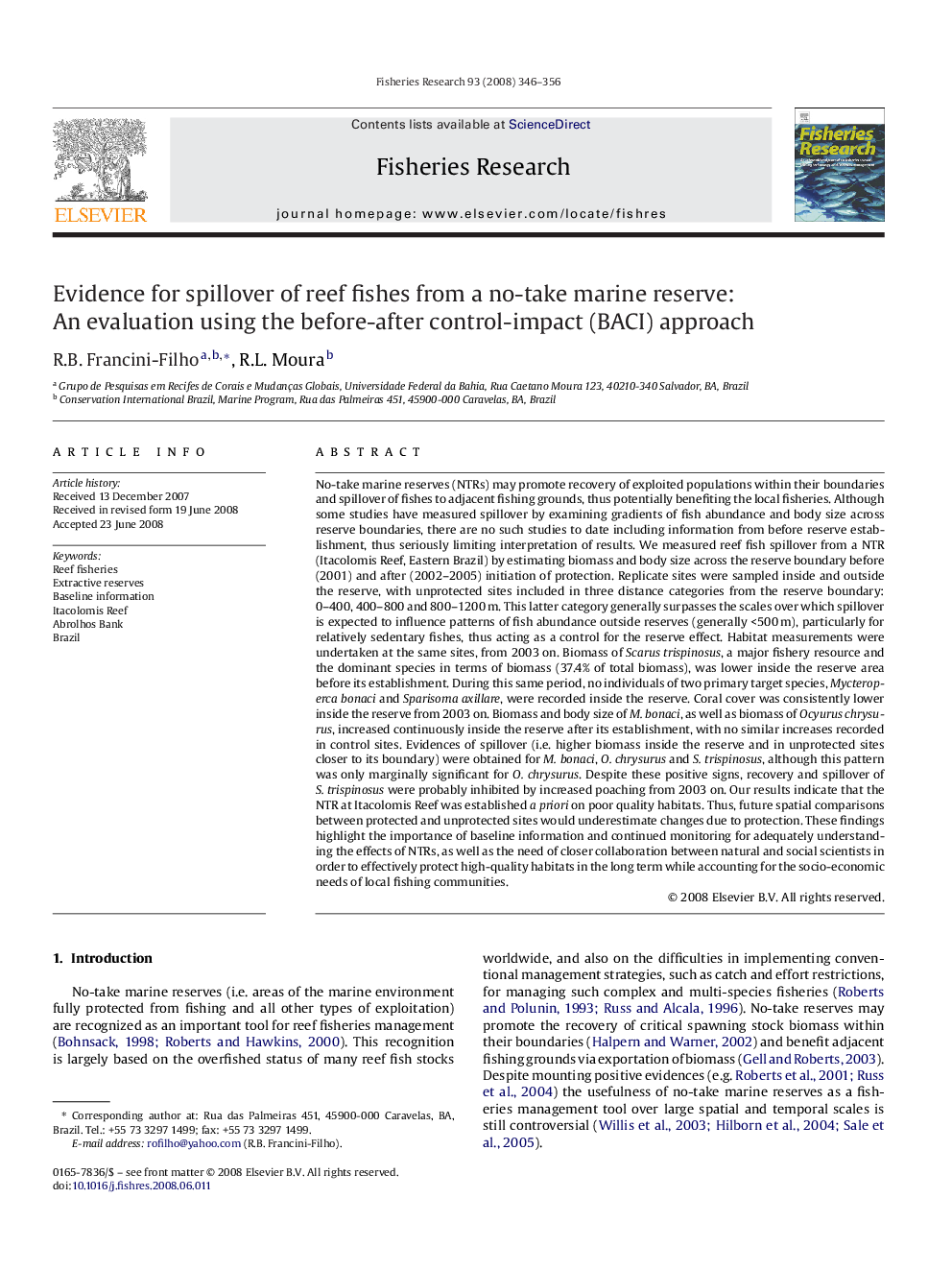| Article ID | Journal | Published Year | Pages | File Type |
|---|---|---|---|---|
| 4544188 | Fisheries Research | 2008 | 11 Pages |
No-take marine reserves (NTRs) may promote recovery of exploited populations within their boundaries and spillover of fishes to adjacent fishing grounds, thus potentially benefiting the local fisheries. Although some studies have measured spillover by examining gradients of fish abundance and body size across reserve boundaries, there are no such studies to date including information from before reserve establishment, thus seriously limiting interpretation of results. We measured reef fish spillover from a NTR (Itacolomis Reef, Eastern Brazil) by estimating biomass and body size across the reserve boundary before (2001) and after (2002–2005) initiation of protection. Replicate sites were sampled inside and outside the reserve, with unprotected sites included in three distance categories from the reserve boundary: 0–400, 400–800 and 800–1200 m. This latter category generally surpasses the scales over which spillover is expected to influence patterns of fish abundance outside reserves (generally <500 m), particularly for relatively sedentary fishes, thus acting as a control for the reserve effect. Habitat measurements were undertaken at the same sites, from 2003 on. Biomass of Scarustrispinosus, a major fishery resource and the dominant species in terms of biomass (37.4% of total biomass), was lower inside the reserve area before its establishment. During this same period, no individuals of two primary target species, Mycteropercabonaci and Sparisomaaxillare, were recorded inside the reserve. Coral cover was consistently lower inside the reserve from 2003 on. Biomass and body size of M. bonaci, as well as biomass of Ocyuruschrysurus, increased continuously inside the reserve after its establishment, with no similar increases recorded in control sites. Evidences of spillover (i.e. higher biomass inside the reserve and in unprotected sites closer to its boundary) were obtained for M. bonaci, O. chrysurus and S. trispinosus, although this pattern was only marginally significant for O. chrysurus. Despite these positive signs, recovery and spillover of S. trispinosus were probably inhibited by increased poaching from 2003 on. Our results indicate that the NTR at Itacolomis Reef was established a priori on poor quality habitats. Thus, future spatial comparisons between protected and unprotected sites would underestimate changes due to protection. These findings highlight the importance of baseline information and continued monitoring for adequately understanding the effects of NTRs, as well as the need of closer collaboration between natural and social scientists in order to effectively protect high-quality habitats in the long term while accounting for the socio-economic needs of local fishing communities.
